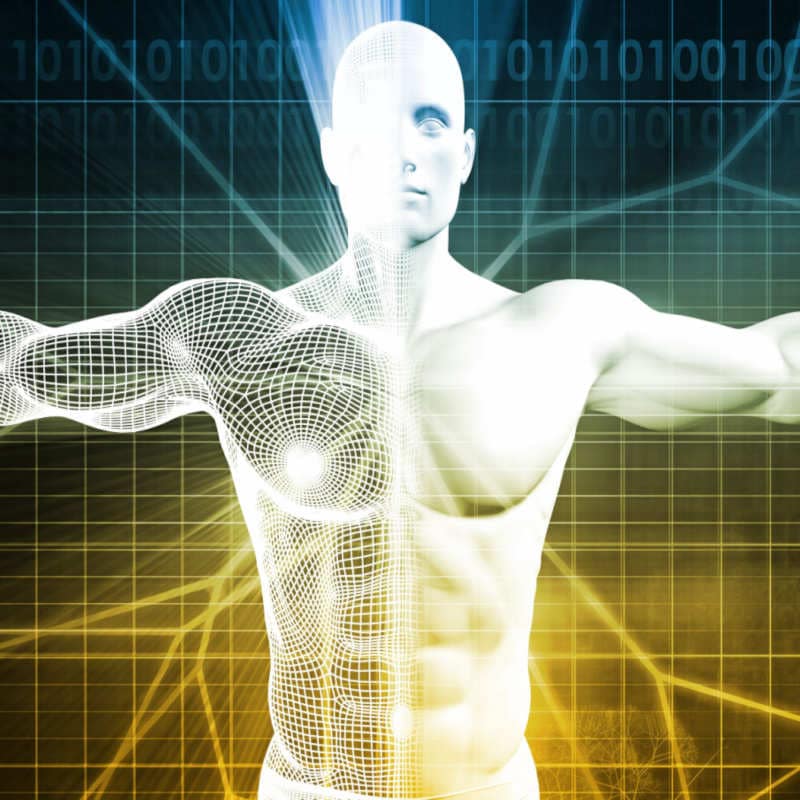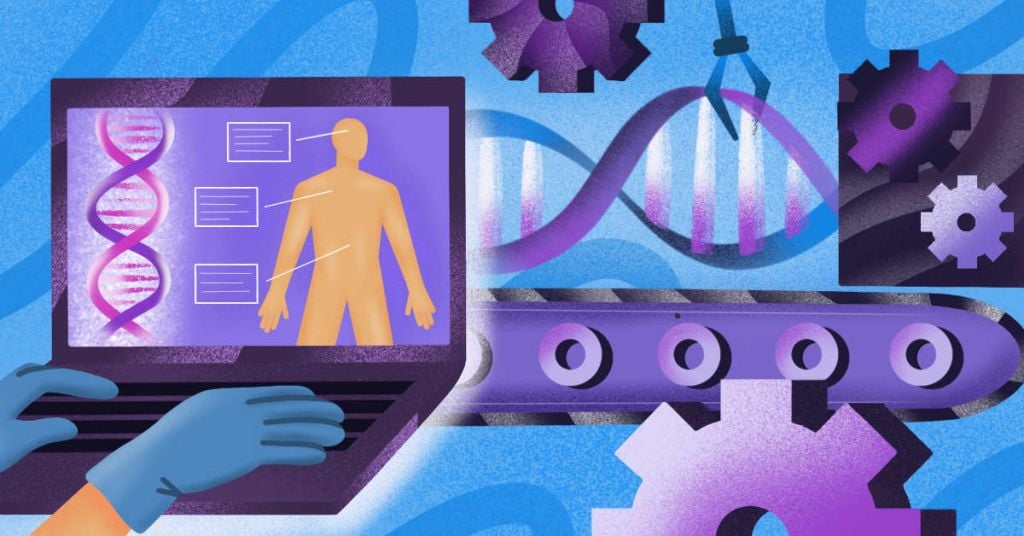Newsletter Signup - Under Article / In Page
"*" indicates required fields
Biotech companies are leveraging the wealth of omics and imaging data to study deep phenotypes for a range of clinical applications including precision medicine approaches to liver disease, neurodegenerative disorders and infertility.
With dozens of omics and imaging technologies in its arsenal, the biopharma industry is generating unprecedented amounts of data compared to just a few years ago. And the quality of this data is better too. For example, researchers have made progress in reliably reading hard-to-sequence regions of the human genome and exploring uncharted proteins in the so-called dark proteome.
The growing richness and complexity of biological data are what provide the depth in deep phenotyping, an emerging trend catalyzing exciting developments in personalized and precision medicine. In the context of healthcare, the term deep phenotyping typically refers to the comprehensive analysis of disease traits, or phenotypes, as an outcome of genetic, epigenetic, lifestyle or environmental factors.
Precision medicine centers on the individual, stressing the fact that each patient is different. However, precision does not guarantee accuracy in mapping medical interventions to outcomes. This is because precision medicine does not account for the level of complexity that underlies diseases and, as a result, fails to establish the causality of disease, instead focusing on one or few biomarkers that are vaguely correlated to disease progression.
Deep phenotyping brings accuracy to precision medicine by embracing the complex nature of biological systems and studying phenotypes at multiple levels by combining multiple approaches. This is already making an impact on a number of therapeutic areas including liver disease, neurodegenerative disorders and infertility.
Better therapies for liver disease
Advances in transplant medicine and a better understanding of liver biology haven’t translated into a significant change in liver transplant outcomes. As people now live longer lives and have fattier diets, the quality of livers available for transplants has worsened. British biotech Ochre Bio aims to improve the quality of transplant livers with deep phenotyping. Last year, it raised $9.6 million in seed funding to advance its work on precision RNA therapeutics that it will use to remodel suboptimal livers.
The startup combines computation, automation and deep phenotyping to develop drugs for liver diseases. Quin Wills, co-founder and CSO at Ochre Bio, explained that the company “images each liver at least six times and uses machine learning to extract features of histology.”
“We map those histological features to the clinical phenotype of the patients that we study,” Wills added. “At the next level down, we study all the liver enzymes that are circulating through the liver.”

By observing how the phenotypes change over time, Ochre Bio’s deep phenotyping approach creates better computational models of liver biology. This provides rich insights into how the liver reacts in response to different drugs.
With deep phenotyping, the objective is never about one kind of phenotype but about integrating knowledge from different biological levels ranging from proteins and other metabolites to complete organs. Instead of studying how a therapeutic alters the levels of a single biomarker or impacts a clinical endpoint, it seeks to reveal the holistic changes across many levels in any system.
For Ochre Bio, “primary phenotypes are the translatable endpoints that you want to change in a clinical trial whereas secondary phenotypes are well understood and validated biomarkers,” Wills said. “The tertiary phenotypes are really all the details of mechanistic studies using single-cell sequencing.”
The attention is now increasingly on diseases that have evaded treatments so far and for which developing new therapeutics is costlier despite advances in drug development. Leveraging the explosion of data and better tools to analyze it, deep phenotyping allows companies to study disease states in more detail than ever before, revealing new mechanisms to target with novel drugs.
Accurate organoid models
Advances in machine learning-based image analysis and computation allow biologists to analyze larger amounts of data and gain richer insights than what was possible a decade ago.
For instance, OrganoTherapeutics, a startup based in Luxembourg, is studying brain phenotypes of patients with Parkinson’s disease. Among other regions in the brain, Parkinson’s disease affects the midbrain, the part responsible for motor activity. Studying the changes in the midbrain is critical to answering important questions about how the disease progresses and its impact on patients.
OrganoTherapeutics creates patient-derived midbrain organoids that recapitulate the pathology of the patients. Jens Schwamborn, the startup’s co-founder, said that deep phenotyping allows the firm to “really look at the organoids in a comprehensive manner at a lot of features at the same time. They [the researchers] put them together, try to understand them, visualize them and see what is actually different in a patient in comparison to the healthy control.”
OrganoTherapeutics uses image recognition and image analysis algorithms to extract different features from images of midbrain organoids. These range from simple measurements like how many cells there are and if they are dead or alive to how complex the neurons are in terms of the number of branches and nodes, among other aspects.
“The interesting part then is that traditionally we would have looked at one feature at a time and compared how it differs between the healthy versus diseased cells, if at all,” Schwamborn added. “But now we are able to look at all those features holistically at the same time.” The startup recently collaborated with U.S. biotech Vyant Bio to develop clinically translatable assays for Parkinson’s.

Systems biology emphasizes that at least some of the properties of any system (in this case a diseased state) arise from the interactions of its components. As Schwamborn clarified, “there could be 10 small differences that individually probably don’t matter too much. But if you look at them all together, it gives a very different picture and tells you which processes are actually affected. And then finally, we integrate those data with those from transcriptomics, metabolomics or mitochondrial activity assays to really look at a complete picture.”
Systems biology has long been dominated by the development of ever faster, cheaper and higher throughput tools to study different kinds of biomolecules and cells. Consequently, biologists now generate large amounts of data. Deep phenotyping has the potential to accelerate the translation of these data into clinical insights for accurate, personalized medicine.
Boosting fertility treatments
When speaking of patient outcomes, biology or technology aren’t always the only determining factors. For many parents trying to conceive through in vitro fertilization (IVF), the number of chances that they get is limited by socio-economic factors, making it an emotionally hard choice. Positive patient outcomes — IVF procedures leading to pregnancies — rely heavily on the ability of predictive models to accurately assess the odds of success. For many, the odds may be so low as to not even justify the costs.
Traditional prediction models for fertility treatment place a lot of weight on age. However, age only accounts for about 50% of the prediction. Consequently, these models are inaccurate for the majority of patients. The U.S. company Univfy combines machine learning and deep phenotyping to integrate multiple factors in its prediction models, thereby improving the prediction of live birth outcomes for IVF.
A clinical diagnosis may tell a patient why she has trouble conceiving, but, according to Mylene Yao, co-founder and CEO of Univfy, “it alone may not be helpful enough for the patient to make a decision about treatment. That’s the reason why we’re looking at deep phenotyping as a broader way to classify clinical characteristics and clinical profiles.”
Univfy has established that there are many clinical factors that can be used as predictors. “If you apply machine learning to build prediction models based on these factors, they can be very accurate,” Yao added. “As a result, doctors can provide a personalized and accurate prognosis for these patients.”
In December 2021, Univfy raised $6 million in Series B funding. The company plans to use it to expand the number of fertility centers it works with as well as working with employers that offer fertility or family-building benefits. Furthermore, it is “amassing more high-quality and comprehensive fertility data and outcomes,” Yao commented. “We’re going to be able to build additional prediction models that specifically address each type of patient segment.”
Despite advances in biopharma and medicine, drug developers have struggled to tackle many complex diseases that impact millions globally. Nevertheless, researchers now have access to greater and richer data on different aspects of human biology. Deep phenotyping will be critical to converting these data into insights that meet the potential of precision medicine and improve patient outcomes for treatable conditions.






